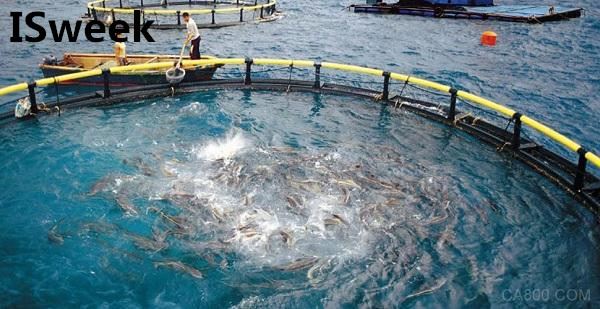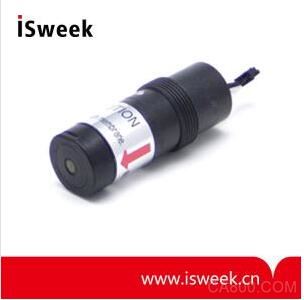Explain the principle of the three major methods for detecting dissolved oxygen
At present, there are three main detection methods for dissolved oxygen. Through the introduction, analysis and comparison of the principles, measurement accuracy, and timeliness of the three methods, the fast and accurate characteristics of dissolved oxygen in water by fluorescence LDO are demonstrated.

1. The basic concept of dissolved oxygen:
Dissolved oxygen (DO) refers to the content of oxygen dissolved in water. It is expressed in milligrams of oxygen per liter of water, and dissolved oxygen is present in water in a molecular state. Dissolved oxygen in water is one of the important indicators of water quality, and it is also one of the important factors for water purification. High dissolved oxygen is conducive to the degradation of various pollutants in the water body, so that the water body can be purified quickly; on the contrary, low dissolved oxygen, the water body The degradation of pollutants is relatively slow.
Dissolved oxygen in water is affected by two factors: (1) Oxygen-depleting effects of decreasing dissolved oxygen, including consumption of oxygen and depletion of biological respiration when aerobic organics are degraded; (2) Increased reoxygenation of DO Mainly dissolved in the air oxygen, oxygen produced by the photosynthesis of aquatic plants, these two effects make the dissolved oxygen content in the water showing temporal and spatial changes.
The content of dissolved oxygen in water is related to atmospheric pressure, water temperature and salt content. Water bodies that are not contaminated with oxygen-consuming substances (usually organic) are saturated with dissolved oxygen. For example, the dissolved oxygen in clean surface water approaches saturation. When there are many organic matters in the water body, the oxygen consumption rate exceeds the oxygen recharge rate, then the dissolved oxygen in the water will continue to decrease, even close to zero, so that the organic matter decomposes in the absence of oxygen, corruption fermentation occurs, and the water quality is serious. deterioration. Therefore, in the evaluation of water quality, dissolved oxygen is used as an indicator of water pollution.
2. The three major detection methods currently in use:
At present, China's detection method standards are: "Determination of dissolved oxygen in water quality iodine method" (GB7489-1987), "Determination of dissolved oxygen in water electrochemical probe method" (HJ506-2009) and the United States ASTM standard (D888-05), The first two are China's national and industry standard methods, and the latter is the EPA's accreditation standard method.
Iodometric method for determination of dissolved oxygen in water
Determination of dissolved oxygen in water, generally using the iodometric method. Manganese sulfate and basic potassium iodide solution were added to water to produce a manganese hydroxide precipitate. As manganese hydroxide is extremely unstable, it rapidly reacts with dissolved oxygen in water to produce manganese sulfate. After 15 minutes, concentrated sulfuric acid was added to react the brown precipitate with the potassium iodide added in the solution, and iodine precipitated. The more dissolved oxygen, the more iodine precipitated, and the darker the color of the solution. With a pipette to take a certain amount of the finished water sample, using starch as an indicator and titrating with a standard solution to calculate the dissolved oxygen content of the sample.
Electrode polarographic determination of dissolved oxygen in water
A constant voltage is applied between the two poles, and the electrons flow from the cathode to the anode to generate a diffusion current. At a certain temperature, the diffusion current is proportional to the dissolved oxygen concentration; the quantitative relationship between the current and dissolved oxygen concentration is established; the instrument automatically converts the ammeter reading to dissolved oxygen concentration. , and shows the dissolved oxygen value on the screen.
Fluorescence LDO Determination of Dissolved Oxygen in Water Principle:
The modulated blue light shines on the fluorescent material to cause it to excite, and emits red light. Since the oxygen molecules can take away the energy (a choking effect), the time and intensity of the red light excitation are inversely proportional to the concentration of oxygen molecules. Using a red light source synchronized with blue light as a reference, the phase difference between the excited red light and the reference light is measured, and the internal calibration values ​​are compared to calculate the concentration of oxygen molecules. After some processing, the dissolved oxygen is output.
The iodometric assay procedure is complex and not suitable for on-site determination. The detection time is relatively long. In algae-producing water bodies, the increase in oxygen emission due to photosynthesis may cause the oxygen in the water to reach an oversaturated state. At this time, the determination of dissolved oxygen in water using the iodometric method is difficult, and the measurement result is not accurate enough.
The electrode polarographic method for the determination of dissolved oxygen in water is simple and quick, and the instrument price is relatively low, which is a national standard method. However, with the consumption of oxygen, fouling occurs on the membrane and electrode, and the formation of an oxygen gradient reduces the reaction rate. If the semi-permeable membrane is damaged, the electrolyte is easily contaminated, causing the potential of the cell to drift, and the drift will be incorrectly displayed as the concentration of dissolved oxygen in the water sample. Therefore, the electrolyte and the semipermeable membrane should be periodically replaced.
Fluorometric LDO determination of dissolved oxygen in water is simple and quick. Compared with the former two methods, the fluorescence method LDO does not require calibration for the determination of dissolved oxygen in water. The response time is fast, the measurement results are stable, there is no requirement for flow, no interference, reduce the frequency of cleaning, and the maintenance is low. However, the relatively high price of the instrument does not belong to the national standard method.

The KDS-25B, a dissolved oxygen sensor imported from Japan's FIGARO Corporation, is a unique original battery sensor developed specifically for water quality control. The most significant feature of this dissolved oxygen sensor is its long service life, free from CO2. Using a special acid electrolyte, the cathode is made of inert metal gold, the anode is made of metal lead, oxygen is diffused through the fluororesin membrane to participate in the redox reaction, forming a lead-acid battery, and then the internal resistance converts the current generated by the redox reaction. Output voltage. The current produced is directly proportional to the dissolved oxygen concentration, which is strictly proportional to the oxygen partial pressure (the higher the dissolved oxygen content, the more oxygen molecules are involved in the reaction through the fluororesin membrane). The KDS-25B is an environmental monitoring, One of the ideal sensors for water quality testing. Widely used in aquaculture industry, on-line environmental monitoring, water source monitoring, sewage treatment and education and research water pollution research. The products are trusted by users all over the world for their stable performance and excellent quality.
Hot Melt Type Fiber Optic Fast Connector
Hot Melt Type Fiber Optic Fast Connector,Afl Fast Connect Lc,Fast Connector Fiber
Ningbo Fengwei Communication Technology Co., Ltd , https://www.fengweicommunication.com